Int'l J. of Communications, Network and System Sciences
Vol. 6 No. 2 (2013) , Article ID: 28166 , 10 pages DOI:10.4236/ijcns.2013.62013
Traffic-Distributed Clustering Scheme for Cluster-Based WSNs with Various Non-Uniform Traffic Fluctuations
Division of Electrical and Electronic Engineering, Graduate School of Engineering, Mie University, Tsu, Japan
Email: kmori@elec.mie-u.ac.jp
Received December 19, 2012; revised January 21, 2013; accepted January 28, 2013
Keywords: Wireless Sensor Networks; IEEE802.15.4; Clustering; Non-Uniform Traffic
ABSTRACT
In wireless sensor networks (WSNs), it is essential to save energy consumption at sensor nodes (SNs). A clustering technique is one of the approaches to save energy consumption, where several neighboring SNs form a cluster and transmit the sensed data to their cluster head (CH), and then the CH sends the aggregated data to a sink node. Under spatial non-uniform traffic environments, the clustering technique causes the non-uniformity in data gathering performance and energy consumption between clusters in WSNs. In this paper, we propose a clustering scheme for the WSNs employing IEEE802.15.4 beacon enabled mode under various non-uniform traffic environments. The proposed scheme distributes network traffic uniformly to the clusters through cluster area control by adjusting beacon transmission power, and thereby achieves uniform and improved data gathering performance. In the clusters with expanded area, however, the performance degradation arises from long distance communications. To solve this problem, the proposed scheme controls transmission power at SNs. In addition, to reduce energy consumption the proposed scheme sets the appropriate active period length in duty cycle operation to the current traffic condition. The performance evaluations by computer simulation show the effectiveness of the proposed scheme for the WSNs under various non-uniform traffic environments.
1. Introduction
In recent years, wireless sensor networks (WSNs) have attracted attention with the progress in technologies of wireless communication and battery equipment and so on. In WSNs, it is important to reduce energy consumption at sensor nodes (SNs) to prolong the life time of the network. An SN consumes energy in the operation of data sensing, processing, and communication. Especially, the SN consumes most of energy in the communicating operation with sending and receiving the data, and therefore, it can save energy by reducing the operation period of communications, which is hereafter called active period. Additionally, SNs need to transmit sensed data correctly without packet losses to achieve high data gathering performance.
A clustering technique is one of the approaches to reduce energy consumption of WSNs. In the clustering, several neighboring SNs form a cluster and each SN transmits the sensed data to its cluster head (CH), and then the CH sends the aggregated data to a sink node. Owing to such data transmission scenario, the clustering achieves a reduction in energy consumption due to lower transmission power and lower packet collision probability, and also improves data gathering performance due to decentralization of network traffic load.
However, the clustering involves a battery depletion problem at CHs which consume larger amount of energy than SNs. Then, several approaches have been proposed to resolve this problem; non-uniform energy consumption at network elements [1-5]. In low-energy adaptive clustering hierarchy (LEACH) [4], which is a typical example of these approaches, all SNs probabilistically take on the role of CH to consume energy uniformly over all SNs. In addition, hybrid energy-efficient distributed clustering (HEED) [5] distributes energy consumption more uniformly between SNs by introducing the selection probability for taking on CH’s role with consideration of the residual energy at SNs. These clustering schemes achieve the uniform energy consumption by taking turns having change of the CH function, and accordingly can extend the network lifetime.
By the way, WSNs are considered to operate under various non-uniform traffic environments, which exhibit temporal and spatial fluctuations in offered traffic load (time and space varying traffic). These traffic fluctuations result from imbalance of SN density, movement of SNs and synchronous data sensing and so on. Several traffic adaptation schemes [6-8] have been proposed to cope with the traffic fluctuations. However, these schemes mainly focus on only the temporal traffic fluctuation, and therefore, they have insufficient capability of handling the spatial traffic fluctuation. Moreover, the spatial traffic fluctuation largely impacts the performance of the clustering schemes. Thus, we have to consider non-uniform traffic environments for the clustering technique.
The clustering with the equal cluster area causes nonuniformity in the energy consumption and transmission performance across the network under spatial non-uniform traffic environments. In the cluster with high traffic load, for example, the energy consumption increases due to high communication traffic, and data gathering performance also deteriorates. Therefore, to achieve high efficient cluster-based WSNs under non-uniform traffic environments, it is essential to make cluster traffic uniform across the network. However, LEACH does not have capability of distributing traffic uniformly over all clusters. Moreover, HEED has certain level of capability of distributing the network traffic to the clusters, however, it cannot provide enough effect of traffic distribution because of not considering non-uniform traffic environments.
In this paper, we focus on the clustering technique for the WSNs under various non-uniform traffic environments and propose a novel clustering scheme which distributes network traffic uniformly over all clusters for the cluster-based WSNs employing IEEE802.15.4 beaconenable mode. The objective of this paper is to achieve uniform and improved data gathering performance by introducing controls of the cluster size and transmission power at SNs. In addition, the proposed scheme can achieve less energy consumption by setting the appropriate active period length to the current traffic conditions. Through the evaluations by computer simulation, we demonstrate the effectiveness of the proposed scheme for the cluster-based WSNs under various non-uniform traffic environments.
The paper is organized as follows. Section 2 briefly describes related work including IEEE802.15.4 beaconenable mode and the HEED. In Section 3, we propose a traffic-distributed clustering scheme to reduce the negative effect caused from non-uniform traffic distribution. Section 4 provides various simulation results and shows the effectiveness of the proposed scheme. Finally Section 5 concludes this paper.
2. Related Work
2.1. IEEE802.15.4 Beacon-Enable Mode
IEEE802.15.4 [9] is a standard for short distance wireless networks such as personal area networks (PANs), and is suitable for WSNs due to low energy consumption in its beacon-enable mode. In the cluster-based WSNs employing the IEEE802.15.4 beacon-enable mode, SNs are categorized into the following three types; PAN coordinator (PANC) which manages entire network, CH which has relay function and manages a cluster, and normal SN.
Each node operates following the superframe as illustrated in Figure 1" target="_self"> Figure 1. The superframe consists of an active period (SD: superframe duration) and an inactive period, whose length are determined by parameters of beacon order (BO) and superframe order (SO), and achieves low energy consumption by introducing cyclic operation between these periods. PANC and CHs periodically transmit a beacon including the information which specifies the superframe structure, and then the SNs synchronize the superframe by receiving the beacon. During a contention access period (CAP) in the SD, SNs access the channel with carrier sense multiple access with collision avoidance (CSMA/CA). Since SNs mainly consume energy in the active period, the appropriate shorter length of the active period achieves less energy consumption at SNs.
In cluster-based WSNs employing the IEEE802.15.4 beacon-enable mode, the SD used for intra-cluster communication in a given cluster is normally allocated to different time part in the superframe from those for other clusters with adequate BO and SO settings. Moreover, the SD used for communication between CHs (inter-CH communication) can be also allocated to different part from those for any intra-cluster communications. Through this SD allocation, the IEEE802.15.4 cluster-based WSNs can easily achieve no inter-cluster interference and also no interference between inter-CH communication and any intra-cluster communications.
In the IEEE802.15.4 cluster-based WSNs, SNs are generally considered to connect to the CH whose beacon is received with maximum power at the SN. Since all CHs transmit the beacon with the same power, SNs ordinarily connect the closest CH from themselves. Therefore, non-uniformity in traffic load arises between clusters in the WSNs with non-uniform traffic distribution, and then, this non-uniformity causes non-uniform data gathering performance and energy consumption between clusters.

Figure 1. Superframe structure.
2.2. Clustering Technique
One of typical clustering techniques for WSNs is HEED, which distributes energy consumption uniformly over all SNs. In the HEED, uniform energy consumption at the SNs is achieved by preferentially selecting the SN with more residual energy. In addition, by determining the communication cost, which is the criteria for SNs to select the connecting CH, in accordance with the intended purpose of the WSNs, the HEED can form the appropriate cluster to the purpose. The communication cost includes minimum degree (see Ref.[5] for the detail), which have a certain capability of distributing traffic over all clusters.
HEED can achieve uniform distribution of energy consumption over all SNs and then the suitable cluster (network) structure corresponding to the communication cost. However, SNs may connect to the CH with a long transmission distance from themselves. Accordingly, HEED suffers from the performance degradation severely at long-distance communications due to the fading and hidden terminal problem. In addition, HEED doesn’t have the capability of distributing traffic load completely under non-uniform traffic environments because it doesn’t assume the operation under such environments. From the above concern, we need to develop the clustering scheme which has enough capability of distributing the traffic load over all clusters under various non-uniform traffic environments.
2.3. Traffic Adaptation Technique
One of the well-known traffic adaptation techniques for WSNs is traffic adaptive duty cycle operation and its typical examples are [6-8]. However these schemes only consider the temporal traffic fluctuations, and consequently, applying them to cluster based-WSNs with spatial traffic fluctuations will result in the ineffective operation because the duty cycle is controlled based on the cluster with the highest traffic load. This is because other clusters with low traffic will be increasing their activity unnecessarily, which leads to energy wastage.
Against the spatial traffic fluctuations, on the other hand, cell breathing technique [10] has been investigated in the field of wireless LANs (WLANs). The cell breathing reduces traffic imbalance among access points (APs) and achieves performance improvement for WLAN systems. However, this technique cannot be applied to cluster-based WSNs directly because the transmission performance will degrade due to excessive hidden terminal problem caused from long-distance transmissions carried out in the expanding coverage area. This is because WSNs normally employ no countermeasure against hidden terminal problem, such as the RTS/CTS mechanism normally employed in WLANs. Moreover, the RTS/CTS mechanism cannot avoid the hidden terminal problem completely and some performance degradation arises even with the RTS/CTS mechanism.
From our views on the existing related work, the objective of this paper cannot be achieved by using a single technique such as mentioned above, and this paper provides a corporative control mechanism which can achieve our objective. This point is a large difference from the existing related work.
3. Traffic-Distributed Clustering Scheme
This section proposes a novel clustering scheme which distributes network traffic uniformly over all clusters for the cluster-based WSNs employing IEEE802.15.4 in order to resolve the non-uniform traffic problem described in the previous section. The proposed scheme consists of three functions;
1) Cluster size control;
2) SN transmission power control; and 3) CAP length adjustment.
The cluster size control distributes network traffic equally to each cluster by adjusting the area size of clusters according to current traffic situations. To achieve this control, beacon transmission power at each CH is controlled based on the traffic offered into its cluster. In the clusters with expanded area, however, due to the fading and hidden terminal problem, the performance degradation arises at long distance communications between the SN and its CH or other SNs belonging to the same cluster.
To overcome this degradation, the proposed scheme adopts transmission power control at SNs, which increases the transmission power of data packets transmitted from the SNs belonging to the expanded clusters. These controls achieve uniform and improved data gathering performance. In addition, to reduce energy consumption at SNs, the adjustment of CAP length in active period (we only consider the CAP but don’t consider the CFP in the active period in this paper) is carried out based on the traffic conditions. The CAP length is adjusted adequately according to the network traffic load.
The CH function consumes high energy in the proposed scheme, therefore we also propose the network configuration introducing network elements dedicating the CH function, which are fixed and uniformly located throughout the network and have enough energy resource such as commercial power supply. This network configuration would avoid the problem of non-uniform energy consumption between SNs. Moreover, the fix-located CHs would also cause no additional control overhead for route construction between CHs (including a PANC) and the uniformly located CHs would prevent the SNs from being out of any CH’s coverage by employing appropriate parameter settings, such as distance between adjacent CHs and minimum transmission powers for CHs and SNs, as listed in Table 1, even when the cluster size dynamically changes due to traffic non-uniformity.
3.1. Cluster Size Control
In the cluster size control, the clusters with high traffic reduce their cluster area, and the low traffic clusters expand according to their current traffic loads. In the IEEE802.15.4 WSNs, the SNs generally connect to the CH whose beacon is received with maximum power, so the cluster size control can be achieved by controlling the beacon transmission power at each CH. Then, we propose the beacon transmission power control shown in Figure 2, where the transmission power of the beacons is increased at the low traffic cluster (CH1 in Figure 2), and is decreased at the high traffic cluster (CH2 in Figure 2). Traffic loads at the clusters can be estimated by monitoring the CAP usage rate R, which is defined as a ratio of channel busy state to idle state during the CAP through the carrier sensing mechanism.
Specifically, the beacon transmission power
 at the time
at the time  [BI] is controlled by comparing the monitored CAP usage rate R with a pre-defined threshold α:
[BI] is controlled by comparing the monitored CAP usage rate R with a pre-defined threshold α:
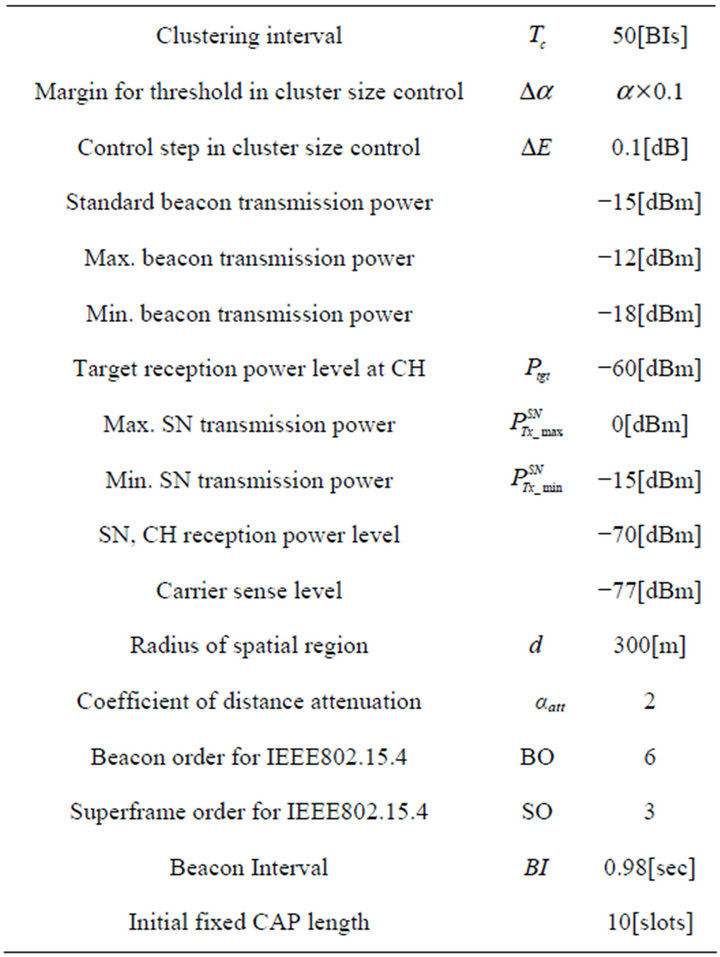
Table 1. Simulation parameters.

Figure 2. Cluster size control.
 (1)
(1)
where, Tc [BIs] is a time interval for controlling  (clustering interval), ΔE is a control step with a constant value.
(clustering interval), ΔE is a control step with a constant value.
In this control, CHs don’t update the beacon transmission power when all CHs increase or decrease their transmission power simultaneously. This is because the increase or decrease at all CHs is not only meaningless for the cluster size control, but also leads to divergence of the beacon transmission power. Moreover, the threshold α is set to an average value of the CAP usage rate R over all the clusters. This setting would avoid the situation where all CHs control 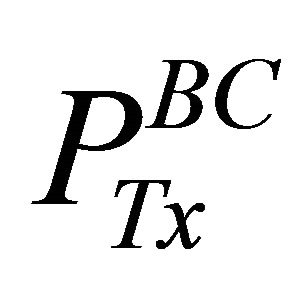 to the same direction (increase or decrease) as possible even under the environment with wide rage traffic load fluctuations. Note that the proposed cluster size control works well even if the adjacent CHs control
to the same direction (increase or decrease) as possible even under the environment with wide rage traffic load fluctuations. Note that the proposed cluster size control works well even if the adjacent CHs control 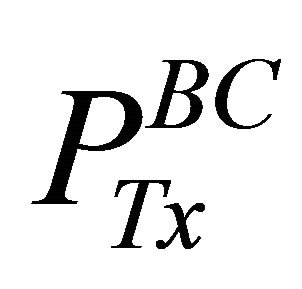 to the same direction simultaneously because the other CHs which control it to the opposite direction most likely exist when employing α of the average R. To set α to the average R, each CH can utilize the control information via the beacon from the PANC, which can collect the Rs from subordinate CHs, calculate their average value, and then notify it to all subordinate CHs. Through these controls, the cluster traffic can be distributed uniformly even when the amount of network traffic load changes.
to the same direction simultaneously because the other CHs which control it to the opposite direction most likely exist when employing α of the average R. To set α to the average R, each CH can utilize the control information via the beacon from the PANC, which can collect the Rs from subordinate CHs, calculate their average value, and then notify it to all subordinate CHs. Through these controls, the cluster traffic can be distributed uniformly even when the amount of network traffic load changes.
3.2. SN Transmission Power Control
In the proposed cluster size control, performance improvement is expected by adjusting cluster area according to current cluster traffic. However, this control causes the performance degradation in the clusters with expanded area due to the fading and hidden terminal problem.
To reduce this degradation, we adopt the SN transmission power control which increases transmission power of the SNs carrying out long distance communications. In this control, the transmission power at SNs is controlled based on the propagation loss 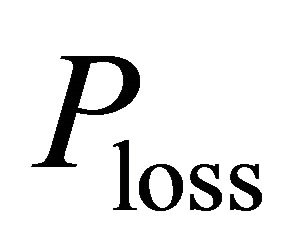 including the fading fluctuation. SNs estimate the
including the fading fluctuation. SNs estimate the 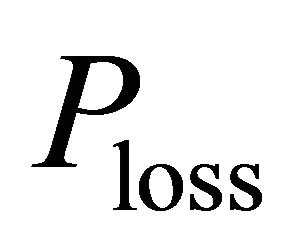 by using the received power of the beacon transmitted from their CHs, and then determine their transmission power of data packets based on the estimated
by using the received power of the beacon transmitted from their CHs, and then determine their transmission power of data packets based on the estimated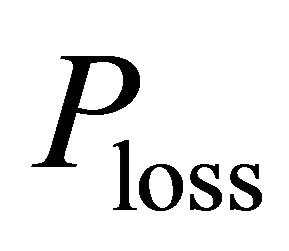 .
.
As specific procedure, CHs periodically transmit the beacon including information of their beacon transmission power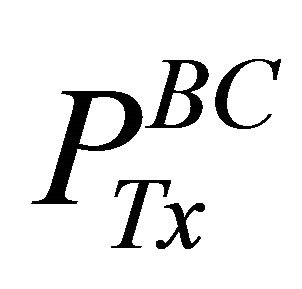 . After receiving the beacon, SNs measure the received power of the beacon
. After receiving the beacon, SNs measure the received power of the beacon , and then calculate the propagation loss including the distance attenuation and the fading fluctuation by using the difference between the informed
, and then calculate the propagation loss including the distance attenuation and the fading fluctuation by using the difference between the informed  and the measured
and the measured .
.
Here, the propagation loss from the SN to its CH is almost the same as that from its CH to the SN, because all communications operate in the same frequency band in IEEE802.15.4. Moreover, according to IEEE802.15.4 superframe structure, SNs transmit data packets immediately after reception of the beacon. Thus, there is little time fluctuation in propagation condition of communication channels.
The transmission power 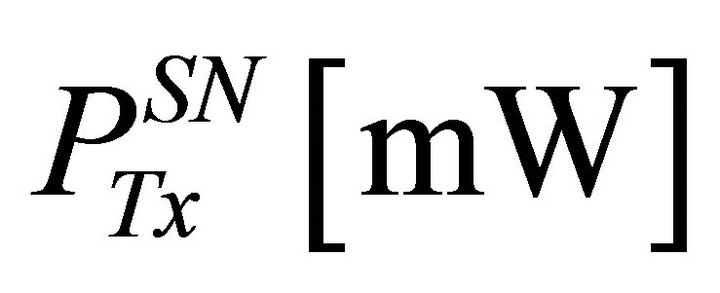 at SNs is controlled as:
at SNs is controlled as:
 (2)
(2)
where, 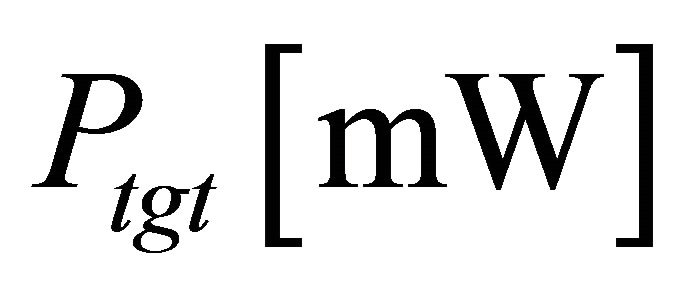 is a target value of received power at CHs. In addition, SN transmission power
is a target value of received power at CHs. In addition, SN transmission power  is controlled within the range between maximum transmission power
is controlled within the range between maximum transmission power 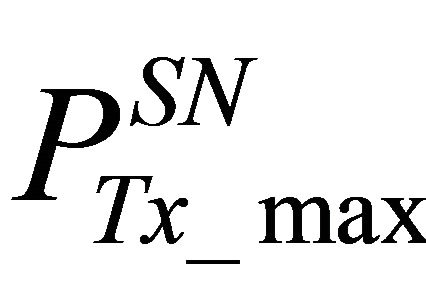 and minimum transmission power
and minimum transmission power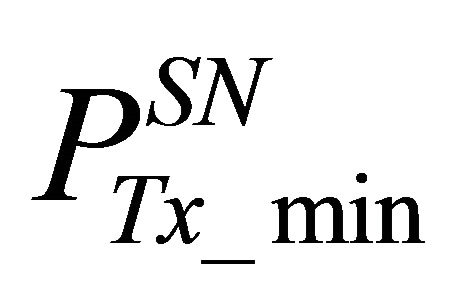 . By setting the minimum transmission power, the proposed scheme mitigates the performance degradation caused from hidden terminal problem at clusters without expanded area.
. By setting the minimum transmission power, the proposed scheme mitigates the performance degradation caused from hidden terminal problem at clusters without expanded area.
This SN transmission power control reduces the negative effect of the fading and hidden terminal problem by controlling the transmission power according to the propagation loss. As a result, this control achieves an improvement in the data gathering performance. On the other hand, as mentioned in Section 2.1, since the IEEE 802.15.4 beacon-enable mode easily achieves no interference condition between intra-cluster communications and between inter-CH and intra-cluster communications, the proposed SN transmission power control causes no negative impact to the system performance.
Applying the SN transmission power control in addition to the cluster size control, it is expected to make the cluster traffic uniform under non-uniform traffic environments, and then, to achieve uniform and improved data gathering performance throughout the network. However, these both controls have no capability to reduce energy consumption because the CAP length, which is a dominant parameter for the energy consumption, remains unchanged.
3.3. CAP Length Adjustment
Assuming to employ the same CAP length for all clusters under non-uniform traffic environments, we have to set relative long CAP length to obtain the required data gathering performance at the high traffic cluster. However, this setting leads to too much long CAP period at low traffic clusters, and therefore, wasted energy at such clusters. The proposed scheme has a possibility to reduce the CAP length uniformly across all clusters as shown in Figure 3, since each cluster handles almost the same lower traffic load than that at higher traffic load cluster without the cluster size control. However, the data gathering performance would deteriorate when the CAP length is reduced more than necessary.
Then, we propose the CAP length adjustment which sets the minimum CAP length while meeting the required data gathering performance. As the target value of the required data gathering performance, we employ the value achieved before employing the proposed cluster size control. The suitable CAP length corresponding to each traffic load can be obtained by assessing the transmission performance before system installation. In this paper, we do not focus on how to control the CAP length dynamically according to the traffic load, which will be left in our future work. In this sense, we here use the term of “adjustment”, not “control”.
Through this adjustment, the proposed scheme is expected to reduce energy consumption while achieving the required data gathering performance.
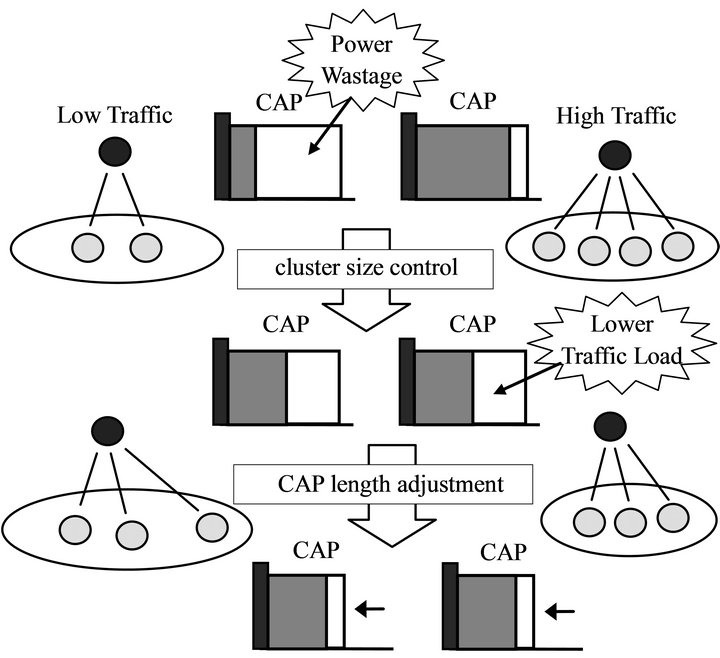
Figure 3. CAP length adjustment.
4. Performance Evaluation
To demonstrate the effectiveness of the proposed scheme, we evaluate system performance for the proposed scheme in terms of the communications from the SNs to the CHs by computer simulation.
4.1. Network Model
We assume a cluster-based WSN under non-uniform traffic environments, where 7 CHs are uniformly located and fixed, and SNs are located around the CHs, as illustrated in Figure 4. The distance between adjacent CHs is always 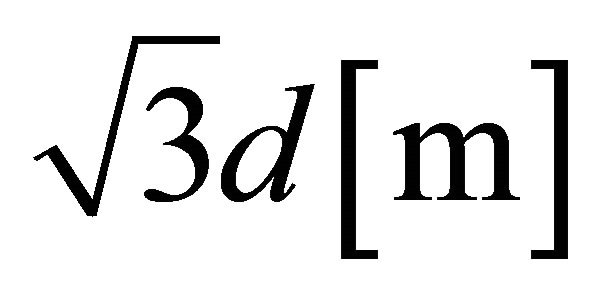 for any combinations of CHs.
for any combinations of CHs.
The MAC protocol follows the specification of the IEEE802.15.4 MAC beacon-enabled mode. The network occupies one carrier-frequency band and the SDs are allocated to a different portion of the superframe between clusters by employing BO of 6 and SO of 3. The interference is limited within a cluster under this scenario. The superframe and slot synchronizations would be perfect across the network.
The propagation in radio channels includes distance attenuation with coefficient αatt, the fading fluctuation whose distribution in reception power follows exponential distribution, and hidden terminal problem.
4.2. Traffic Model
Traffic characteristic varies a great deal depending on applications applied to WSNs. In this paper, since we do not focus on a specific application and try to derive the performance for the general case, which can offer numerous suggestions to system design for WSNs, we introduce a Poisson arrival model to our traffic generation model, which is commonly accepted traffic generation model for performance evaluations of communication systems. Each SN generates packets with a constant length following a Poisson arrival with the same generation rate.

Figure 4. Network model.
We assume two types of non-uniform traffic; spatial non-uniform traffic and time-space-varying traffic.
Under the spatial non-uniform traffic environment,  SNs are uniformly located within a radius of d [m] from the CHs as shown in Figure 4. We assume the traffic characteristic of spatial non-uniformity is caused from non-uniformity in SN density across data sensing area and different values of
SNs are uniformly located within a radius of d [m] from the CHs as shown in Figure 4. We assume the traffic characteristic of spatial non-uniformity is caused from non-uniformity in SN density across data sensing area and different values of 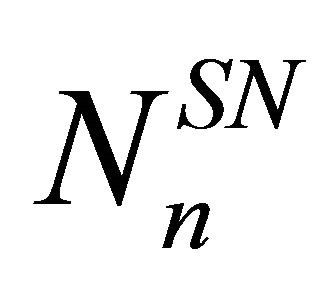 are given to different regions to simulate this type of traffic non-uniformity. The number of SNs
are given to different regions to simulate this type of traffic non-uniformity. The number of SNs  in the n-th region remains constant in time axis in this traffic model.
in the n-th region remains constant in time axis in this traffic model.
Under the time-space-varying traffic environment, the number of SNs located in each region changes every  [BIs]. The number of SNs
[BIs]. The number of SNs 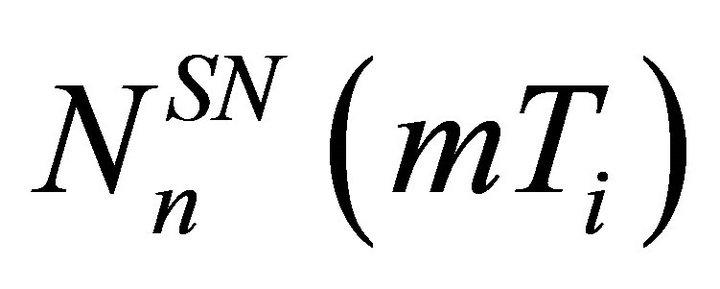 in the n-th region at the time
in the n-th region at the time  [BIs] is given by:
[BIs] is given by:
 (3)
(3)
where A is the maximum variation from the average number of SNs ,
, 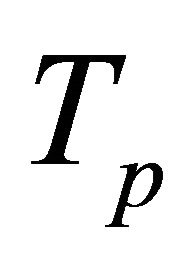 [BIs] is a period of traffic fluctuation, and
[BIs] is a period of traffic fluctuation, and  is the initial phase at the n-th region. The function “round(x)” rounds off the variable x. By using this model, we can simulate various time-spacevarying traffic environments with changing the initial phase
is the initial phase at the n-th region. The function “round(x)” rounds off the variable x. By using this model, we can simulate various time-spacevarying traffic environments with changing the initial phase . Note that this model is also based on the target of our performance evaluations, that is the derivation of generic performance under time-space-varying traffic environments.
. Note that this model is also based on the target of our performance evaluations, that is the derivation of generic performance under time-space-varying traffic environments.
4.3. Evaluation Metric
We evaluate a successful reception rate as an indicator of the data gathering performance, a standard deviation of successful reception rate which indicates the variance in the data gathering performance between clusters, and packet cost as an indicator of energy consumption performance. The successful reception rate is defined as the ratio of the number of packets successfully received at CHs to total number of packets generated at SNs throughout the network. The packet cost is defined as the energy consumption per one packet transmission at SNs. The energy consumption is calculated from the time duration dwelling at each state; Transmission, Reception and Idle, and its energy consumption shown in Table 2 and [11,12].
The proposed scheme is evaluated for two cases: one

Table 2. Energy consumption parameters.
with only the proposed cluster size and SN transmission power controls (“prop.(w/o CAP)” in figures), and another with all proposed controls including the CAP length adjustment (“prop.(with CAP)” in figures), in which the CAP length is set to minimum length while satisfying the successful reception rate at each traffic load achieved by the IEEE802.15.4 with the fixed same beacon transmission power. The conventional schemes compared with the proposed scheme are original IEEE 802.15.4 employing fixed same beacon transmission power (“constant beacon” in figures), and HEED employing the communication cost of minimum degree (“HEED (MinDegree)” in figures). In the HEED, to compare with the proposed scheme, the control parameters are set so that the network is likely to have 7 CHs, and the statistics are collected only for the cases of 7 CHs. In addition, the performance for the original IEEE802.15.4 under uniform traffic environments is also evaluated. In these conventional schemes, to evaluate fairly to the proposed scheme, the transmission power at SNs is set to the average SN transmission power provided by the proposed scheme, which is −8 [dBm].
4.4. Evaluation Results
The evaluation results under the spatial non-uniform traffic environment are shown in Figures 5-8 and those under the time-space-varying traffic environment are shown in Figures 10-13. The main parameter settings used in the simulations are shown in Table 1.
4.4.1. Under Spatial Non-Uniform Traffic Environment
The number of SNs  in the region
in the region  is set to
is set to . The abscissa axes in Figures 5-8 are the network packet generation rate, which is defined as the average number of packets generated during one packet length in entire network.
. The abscissa axes in Figures 5-8 are the network packet generation rate, which is defined as the average number of packets generated during one packet length in entire network.
Figure 5 shows the successful reception rate. The per-

Figure 5. Successful reception rate under spatial non-uniform traffic environment.
formance for the proposed scheme without the CAP length adjustment has obvious improvement compared with the conventional schemes. Although the HEED with “MinDegree” has some effect of traffic uniformity between clusters, it is hard to improve the performance due to the fading and hidden terminal problem because some SNs may connect to the CHs with long distance.
Figure 6 shows the standard deviation of successful reception rate. The proposed scheme achieves smaller standard deviation than the conventional “constant beacon” case, and moderates the variance in successful reception rate between 7 clusters, because the cluster size control uniforms the cluster traffic.
Figure 7 shows the minimum CAP length. The proposed scheme with CAP length adjustment reduces the CAP length and its decrement is varying with the packet generation rate, because the conventional schemes have too much enough CAP length at the regions with low packet generation rate.
Figure 8 shows the packet cost. The proposed scheme with CAP length adjustment decreases energy consumption significantly under lower traffic load conditions, compared with other schemes. This is because that the proposed scheme sets the short CAP length under lower

Figure 6. Standard deviation of successful reception rate under spatial non-uniform traffic environment.
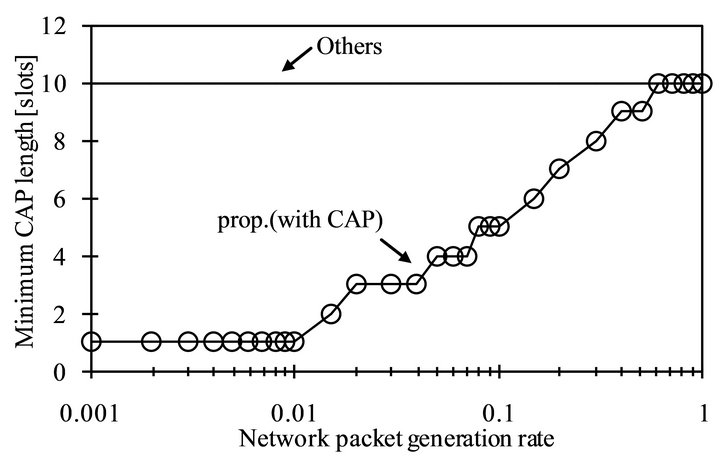
Figure 7. Minimum CAP length under spatial non-uniform traffic environment.
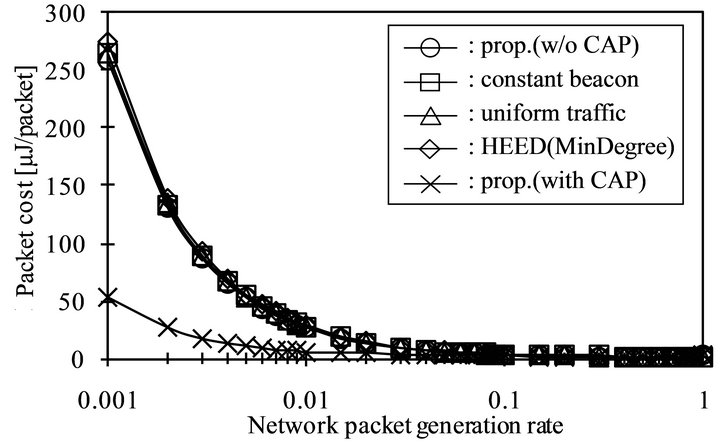
Figure 8. Packet cost under spatial non-uniform traffic environment.
network traffic loads. In contrast, other schemes obtain no improvement in the SN energy consumption because they cannot reduce the CAP length, which is dominant to the energy consumption, even under lower network traffic loads.
From these results, the proposed scheme with CAP length adjustment can reduce energy consumption while achieving the required successful reception rate.
4.4.2. Under Time-Space-Varying Traffic Environment
In the time-space-varying traffic, we assume the traffic fluctuation shown in Figure 9, where the initial number of SNs in each region is the same as the spatial non-uniform traffic environment. The parameters used in the time-space-varying traffic shown in Figure 9 are listed in Table 3. The abscissa axes in Figures 9-13 are time, where the network packet generation rate is set to 0.04.
Figure 10 shows the successful reception rate. The performance for the proposed scheme without the CAP length adjustment improves compared with the conventional “constant beacon” case. The performance for the proposed scheme with the CAP length adjustment also improves but is close to that for the “constant beacon” case because the proposed scheme with the CAP length adjustment set to short CAP length while satisfying the successful reception rate obtained in the “constant beacon” case. Therefore, the proposed schemes achieve performance improvement also under the time-space-varying traffic environment.
Figure 11 shows the standard deviation of successful reception rate. The performance of the proposed schemes is lower than that of the “constant beacon” case. In addition, the proposed schemes achieve almost constant standard deviation in the time axis, compared with the “constant beacon” case. This is because the proposed cluster size control can uniform the cluster traffic even when the offered traffic varies with time in addition to space.
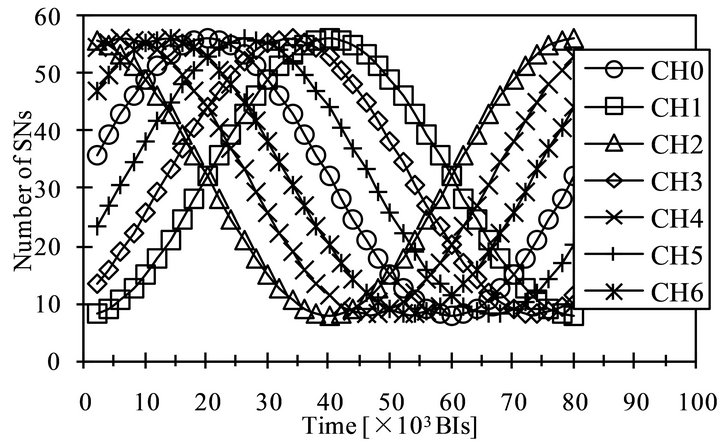
Figure 9. Time-space-varying traffic model.

Table 3. Traffic parameters.

Figure 10. Successful reception rate under time-spacevarying traffic environment.

Figure 11. Standard deviation of successful reception rate under time-space-varying traffic environment.
Figure 12 shows the minimum CAP length. The proposed scheme with CAP length adjustment reduces the CAP length all the time. Its decrement in the CAP length depends on the offered traffic loads.
Figure 13 shows the packet cost. The proposed scheme with CAP length adjustment decreases energy consumption significantly, compared with the “constant beacon” case. This is because that the proposed scheme can set the short CAP length while satisfying the required successful reception rate. The packet cost gets smaller under the time region when the large reduction in the CAP length is achieved.
From these results, the proposed scheme achieves the improvement of successful reception rate and the reduction of energy consumption under the time-space-varying traffic environment.
5. Conclusions
To resolve non-uniform traffic problem arising in clusterbased IEEE802.15.4 WSNs under non-uniform traffic environments, in this paper, we proposed the novel clustering scheme which distributes network traffic uniformly over all clusters. In the proposed scheme, the
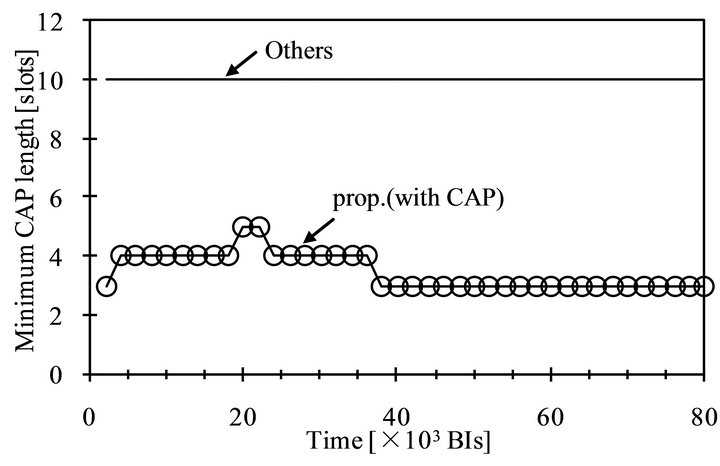
Figure 12. Minimum CAP length under time-space-varying traffic environments.
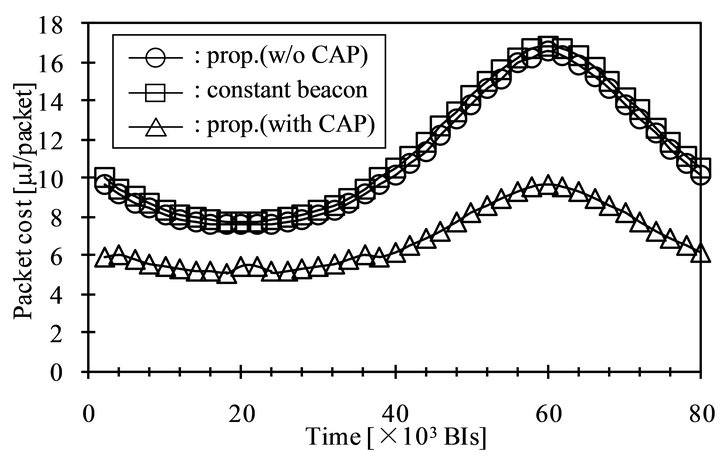
Figure 13. Packet cost under time-space-varying traffic environments.
cluster size control uniforms cluster traffic across the network, and the SN transmission power control mitigates negative effect of the fading and hidden terminal problem. To reduce the energy consumption, the CAP length adjustment sets the appropriate CAP length according to cluster traffic load.
The results of the computer simulations assuming various non-uniform traffic environments show the proposed scheme achieves uniform and improved successful reception rate across the network as well as reduction in the energy consumption at SNs. Therefore the proposed scheme is effective for cluster-based WSNs under various non-uniform traffic environments.
The future work is required to investigate how to control the CAP length dynamically according to the traffic load. We also intend to study more detailed investigation considering the traffic characteristic for some specific applications in our future work.
REFERENCES
- S. Lindsey, C. Raghavendra and K. Sivalingam, “Data Gathering Algorithms in Sensor Networks Using Energy Metrics,” IEEE Transactions on Parallel and Distributed Systems, Vol. 13, No. 9, 2002, pp. 924-935. doi:10.1109/TPDS.2002.1036066
- V. Loscri, G. Morabito and S. Marano, “A Two-Levels Hierarchy for Low-Energy Adaptive Clustering Hierarchy (TL-LEACH),” Proceedings of IEEE Vehicular Technology Conference, Dallas, 25-28 September 2005, pp. 1809-1813.
- L. Sungil and L. Jaesung, “Hybrid Cluster Mesh Scheme for Energy Efficient Wireless Sensor Networks,” IEICE Transactions on Communication, Vol. E91-B, No. 8, 2008, pp. 2610-2617.
- W. R. Heinzelman, A. P. Chandrakasan and H. Balakrishnan, “An Application-Specific Protocol Architecture for Wireless Microsensor Networks,” IEEE Transactions on Wireless Communication, Vol. 1, No. 4, 2002, pp. 660- 670. doi:10.1109/TWC.2002.804190.
- O. Younis and S. Fahmy, “Distributed Clustering in Ad- Hoc Sensor Netoworks: A Hybrid, Energy-Efficient Approach,” Proceedings of IEEE Computer and Communications Societies, 7-11 March 2004.
- P. Lin, C. Qiao and X. Wang, “Medium Access Control with a Dynamic Duty Cycle for Sensor Networks,” Proceedings of IEEE Wireless Communications and Networking Conference, Atlanta, 21-25 March 2004, Vol. 3, pp. 1534-1539.
- M. Neugebauer, J. Ploennigs and K. Kabitzsch, “Duty Cycle Adaptation with Respect to Traffic,” Proceedings of Emerging Technologies and Factory Automation, Catania, 19-22 September 2005, pp. 8-432.
- Y. Kwon, et al., “Traffic Adaptive IEEE802.15.4 MAC for Wireless Sensor Networks,” IFIP International Conference on Embedded and Ubiquitous Computing, Seoul, August 2006, pp. 864-873.
- IEEE802.15.4, Part15.4 Wireless MAC and PHY Specifications for Low-Rate WPANs, 2006.
- P. Bahl, M. T. Hajiaghayi, K. Jain, V. Mirrokni, L. Qiu and A. Saberi, “Cell Breathing in Wireless LANs: Algorithms and Evaluation,” IEEE Transactions on Mobile Computing, Vol. 6, No. 2, 2007, pp. 167-178. doi:10.1109/TMC.2007.20
- M. Arzamendia, K. Mori, K. Naito and H. Kobayashi, “Traffic Adaptive MAC Mechanism for IEEE 802.15.4 Cluster Based Wireless Sensor Networks with Various Traffic Non-Uniformities,” IEICE Transactions on Communication, Vol. E93-B, No. 11, 2010, pp. 3035-3047.
- Texas Instruments, “CC2420 RF Transceiver Datasheet,” 2007.

